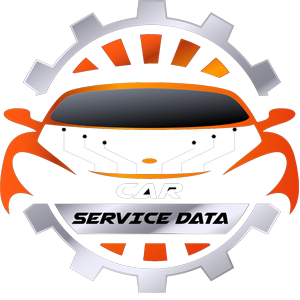
9 Reasons a Car Shakes When Accelerating
Every driver expects a smooth and comfortable ride (unless you’ve ever driven a Yugo). But when your car starts to shake, it can make you feel anxious or worried. Whether you’re idling at a traffic light, driving on the highway, or braking, unexpected vibrations let you know something’s wrong.
We’ll look at the most likely causes of shaking or vibrations while driving. You might be surprised that most of these have nothing to do with the engine.
9 Most Common Causes of Your Car Shaking or Rocking
You can feel a shake in your car at different times. It may occur during all of the following processes: idling, accelerating, driving, and braking, or it may occur only during one or more of these processes.
Here are the most common reasons why your car may shudder when idling, accelerating, driving, or braking. In most cases, the true cause is easy to fix and requires just replacing a part.
1) Faulty Engine Suspension (Idling, Acceleration, Driving)
Engine mounts connect the vehicle’s engine to the vehicle’s frame. The suspension is designed to absorb the vibrations and shocks that occur when driving on the road. These same brackets also connect to the transmission.
As you can see, engine mounts are very important to a vehicle. If one of them is excessively worn or damaged, the entire vehicle will vibrate when the engine is running. If one motor mount fails, it is only a matter of time before the others fail as well.
2) Tire-Related Problems (Driving)
Because tires are the only point of contact between the vehicle and the road, they are a common source of vibration and shock. This could be due to one of several tire issues:
1. Uneven tire tread wear – As tire tread wear increases, it can develop bald spots and an uneven tread pattern. This inconsistency in tread depth can cause vibrations, especially at higher speeds.
2. Unbalanced tires and wheels – If your wheels aren’t properly balanced, you could experience increased vibrations when accelerating. This problem often feels like a rhythmic shaking or wobbling.
3. Wheel Alignment Issues – Improper wheel alignment can cause your car to pull to one side and cause vibrations. This issue often leads to uneven tire wear, making the problem worse over time.
4. Flat Tires – If your car sits in the same position for a long time, your tires may develop flat tires, causing a knocking sensation while driving.
5. Tire Damage – Dents, blisters, or other physical damage to your tires can cause them to become unbalanced and cause shuddering.
3) Distorted Brake Discs (When Braking and Driving)
If the brake discs in your braking system are warped, the brake pads and calipers will not function properly. In this situation, when you press the brake pedal to slow down your vehicle, the uneven brake discs will not apply the proper pressure to all parts of the disc. Instead, you’ll feel a lot of wobble when you press the brake pedal as the brake pads hit the uneven parts of the rotor.
4) Loose Wheel Bearings (Drive)
Wheel bearings lubricate the wheels of your vehicle and prevent them from generating too much heat. If the wheel bearings are too loose, the wheels will make noises and rattle. It will also reduce the stability of your vehicle, so you shouldn’t wait too long before replacing the bearings.
5) Faulty Driveshaft (Drive Side)
Rear-wheel drive vehicles have a driveshaft (propeller shaft) that transfers power from the engine to the rear wheels. If the driveshaft is not perfectly straight when driving a rear-wheel drive vehicle, the whole car will shake. A bent driveshaft is not something you can ignore.
6) Bent Axles (Driving)
Bent axles cause shaking and vibration. The car shakes more when accelerating faster. If you regularly drive on uneven terrain or bumpy roads or have been in an accident, you may have a bent axle. Because the axle spins so quickly, even small irregularities can cause noticeable vibrations.
7) Brake Caliper Clamping (When Braking and Driving)
Every time you press the brake pedal, the brake caliper presses the brake pads against the brake rotor. If the brake caliper sticks and doesn’t release properly, it will cause your vehicle to shudder while driving. This shudder gets worse when driving at speed or when you press the brake pedal.
8) Fuel System Issues (Idling and Acceleration)
The fuel system, which includes the injectors, pump, and fuel filter, is responsible for delivering the right amount of fuel to the engine at the right time. If any of these components fail or become clogged, fuel delivery can become erratic.
This can cause the engine to run rough and produce noticeable vibrations, especially when idling and accelerating. In many cases, fuel system problems often cause the check engine light to come on.
9) Worn constant velocity joints (when driving, especially when turning)
Constant velocity joints (CVJs) are necessary components in the drive axles of a vehicle to transfer power from the transmission to the wheels while balancing the up and down movement of the suspension.
If the CVJs become damaged or worn due to aging, they can cause shuddering when accelerating, especially when turning. You may hear a clicking or popping noise when making sharp turns, which is a very common sign of a problem with a CV joint, and if the problem worsens, you may notice more shaking when driving at higher speeds.
Diagnostic Steps
Step 1. Identify When the Shaking Occurs
– While idling
– During acceleration
– At constant speeds
– When braking
– During specific actions (ie: turning)
Step 2. Check Your Tires
– Inspect for uneven wear patterns
– Look for physical damage (bulges, cuts, screw in tire)
– Confirm proper inflation
Step 3. Test at Different Speeds
– Drive at various speeds to see if the shaking changes
– Note any speed where vibration intensifies
Step 4. Pay Attention to the Steering Wheel
– Does it shake more than the rest of the car?
– Does the shaking change when you turn?
Step 5. Listen for Unusual Noises
– Clicking or popping (possible CV joint issues)
– Rumbling or roaring (potential wheel bearing problems)
Step 6. Check Your Brakes
– Apply brakes at different intensities
– Note any pulsing in the brake pedal
Step 7. Inspect Under the Hood
– Look for loose or damaged engine mounts
– Check for any disconnected hoses or wires
Step 8. Scan for Error Codes
– Use an OBDII scan tool to check for any stored error codes
Step 9. Test Drive on Different Road Surfaces
– See if the shaking changes on smooth vs. rough roads
Step 10. Consider Recent Changes
– Think about any recent repairs or maintenance
– Note if you’ve recently hit any large potholes or curbs
By going through these steps, you’ll be able to gather valuable information to help diagnose the issue or provide your mechanic with detailed symptoms for a more accurate assessment.

